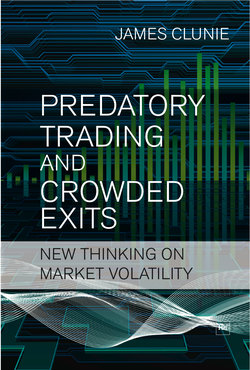Читать книгу Predatory Trading and Crowded Exits - James Clunie - Страница 23
Figure 1.1 - Barclays PLC share price, relative share price and trading volume around 31 October 2008 MCN issue
ОглавлениеSource: Thomson Reuters
From publicly issued documents and regulatory news-service releases it is clear that at least one long-short manager that held short positions in Barclays equity bought MCNs in scale (thus covering at least part of their short position at a favourable price), and at least one long-only manager sold existing long positions in ordinary shares and bought a large number of MCNs. Both of these were rational trading strategies. Nevertheless, many millions of arbitrage profits remained available for those able to exploit the opportunity – there was good liquidity in the ordinary shares at prices well above the offered MCN price and there were hours to make the required trades. Why would millions of arbitrage profits be left to collect for hours on end?
If $100 bills were dropped on the sidewalks of Chicago at eight o’clock in the morning, would you expect them to still be there by lunch time?
And yet this appeared to happen on the London Stock Exchange on 31 October 2008.
One possible explanation is that markets were segmented. That is, investors could not buy the MCNs by mandate, or at least were not sure if they could buy the MCNs (and could not get clarification from their compliance and legal teams quickly enough to take advantage of the open offer!).
Another potential explanation is short–selling constraints. About a month earlier, the UK Financial Service Authority had prohibited the active creation or increase of net-short positions in publicly quoted financial companies, although existing short positions were unaffected. This prohibited those traders without legacy short positions in Barclays ordinary shares from under-taking capital-structure arbitrage based around the issue of the MCNs. It is also possible that holders of existing short positions in Barclays’ ordinary shares feared that they might have been unable to hold on to these positions until conversion of the MCNs. Alternatively, they might have been unsure about how many MCNs they could obtain in the open offer (although this seems unlikely – there was a huge supply of MCNs on offer!). Finally, it could simply have been investor error: inertia or a misunderstanding of the nature of the MCNs.
Note from Figure 1.2 below that stock lending did not increase around the time of the MCN issue, consistent with the FSA ban on short-selling (although the increase in stock borrowing in early November is interesting!).
